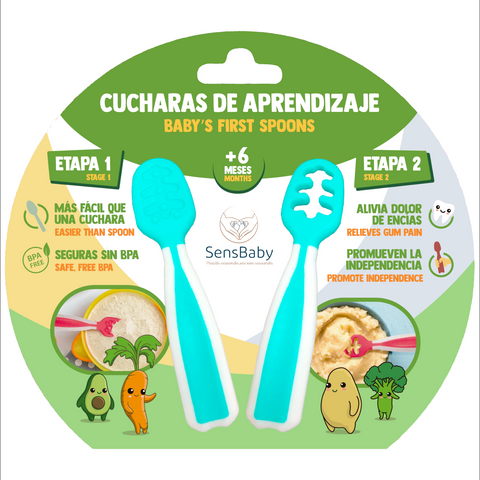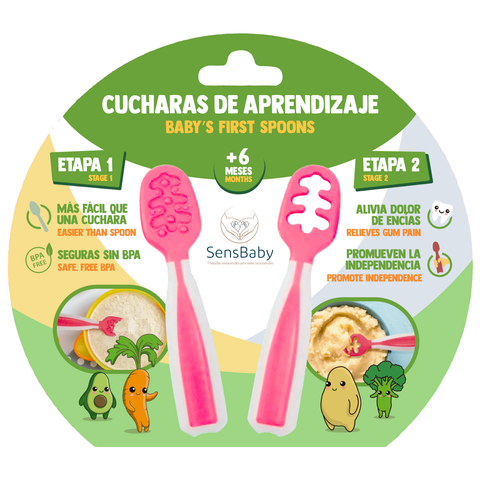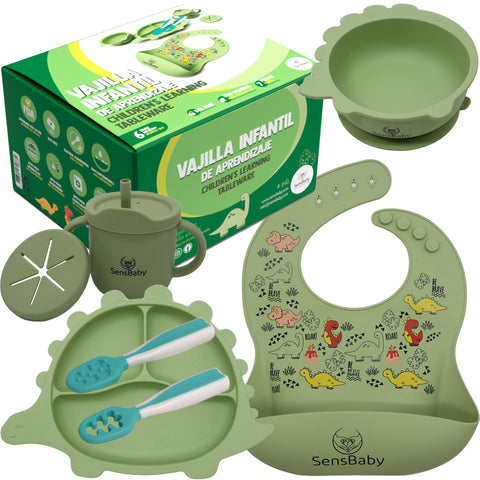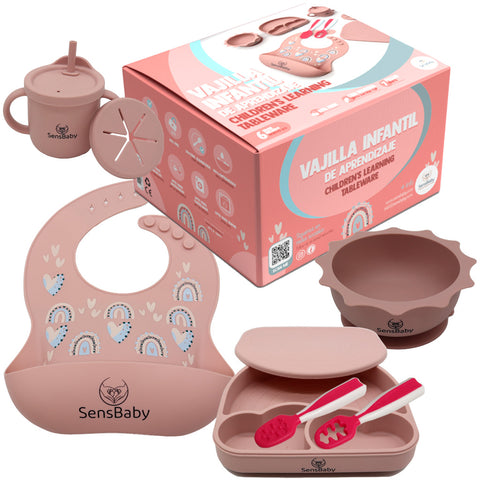Baby-Led Weaning in Practice: Real-Life Experiences from Parents Who Have Tried It

Have you ever wondered what it would be like if your baby could start eating independently, without the need for purees or baby food? Welcome to the fascinating world of Baby Led Weaning (BLW). In this article, we'll explore this innovative practice through real-life parent testimonials, experience stories, and interviews.
What is Baby Led Weaning?
Baby-led weaning is a method of introducing solid foods in which babies are allowed to feed themselves from the beginning, bypassing the puree stage. Instead of being spoon-fed, babies pick up pieces of food with their own hands and bring them to their mouths. This approach encourages independence and the development of fine motor skills.
Benefits of Baby Led Weaning
- Motor Skill Development : Babies develop hand-eye coordination and fine motor skills by handling food.
- Autonomy and confidence : Babies learn to trust their ability to feed themselves and control the amount of food they eat.
- Dietary diversity : Babies are exposed to a variety of foods and textures from the beginning, which can encourage long-term healthy eating habits.
Testimonials from parents who have practiced BLW reveal a number of surprising benefits:
- Development of motor skills to a healthy relationship with food.
- Greater willingness to try a variety of foods and greater independence at the table.
- Develop a palate that is more open to different flavors and textures.
- Promotes the consumption of healthy foods.
- Helps prevent speech therapy and orthodontic problems.
- Reduces the risk of prematurely abandoning breastfeeding
- Help your baby learn to eat according to his or her needs.
- Reduces the incidence of extreme food aversions and preferences.
- Promotes a healthy weight in childhood
- Stimulates all of the baby's senses, providing a pleasurable sensory experience.
- Makes learning a fun and relaxing experience for the whole family.
-
Encourage the whole family to adopt healthier eating habits.
How to Get Started with Baby-Led Weaning
Initial Preparation
- Consult with your pediatrician : Before you begin, it's essential to talk to your baby's pediatrician to make sure he or she is ready to start solid foods.
- Proper equipment : You'll need a safe highchair, baby-friendly bibs, and cutlery. It's also helpful to have an easy-to-clean surface.
In our catalog we have the following learning spoons:
You can also find our dinnerware sets that include training spoons, along with other utensils designed specifically for babies, such as divided plates with suction cups, non-spill cups, and bibs. These tools can make the feeding process easier, safer, and more fun for babies as they explore a variety of foods.
First Foods
- Cooked Vegetables : Carrots, broccoli, and sweet potatoes are great options to start with.
- Soft fruits : Bananas, avocados, and pears are easy to handle and chew.
- Soft proteins : Small pieces of cooked chicken or well-cooked fish.
Safety in BLW
- Constant supervision : Never leave your baby alone while eating.
- Avoid dangerous foods : Do not offer small, hard foods that can cause choking, such as whole nuts, whole grapes, or raw carrots.
BLW Testimonials: Parents' Experiences
The Story of Ana and her Baby Lucas

Ana decided to try Baby Led Weaning with her son Lucas when he turned six months old. "I was a little nervous at first, but it was amazing to see how Lucas handled food. He loved exploring different textures and flavors, and quickly became very skilled with his hands," says Ana.
The Experience of Juan and his Daughter Maria

Juan chose BLW because he wanted his daughter María to develop independence from an early age. "It was surprising to see how quickly María learned to feed herself. Every meal was a new adventure for her, and she enjoyed trying new things," Juan recalls.
Parents' Stories: Challenges and Solutions
The Adaptation of Isabel and Her Baby Sofia

Isabel found that her daughter Sofia struggled with certain foods at first. "We realized the pieces were too big for her, so we cut them into smaller pieces, and that helped a lot," Isabel explains.
Carlos's Patience with his Son Diego

Carlos noticed that his son Diego became easily frustrated when he couldn't handle his food. "We gave him more time and encouraged him with patience. Eventually, he found his rhythm and now eats on his own without any problems," says Carlos.
Expert Interviews: Opinions from Child Nutrition Professionals
Dr. Marta López, Pediatrician

Dr. López recommends BLW for its many benefits. "Baby-led weaning not only promotes independence, but can also reduce the risk of obesity by allowing babies to regulate their food intake naturally," she says.
Laura Gómez, Child Nutritionist

Laura emphasizes the importance of dietary diversity in BLW. "Introducing a variety of foods from the beginning can help prevent future food selectivity and ensure babies receive all the necessary nutrients," she explains.
Baby Nutrition in BLW
Importance of a Balanced Diet
- Proteins : Include sources such as chicken, fish and eggs.
- Carbohydrates : Offers potatoes, rice and pasta.
- Fruits and Vegetables : Ensures a variety of colors and textures.
- Healthy Fats : Avocados, olive oil and nuts (ground).
Supplementation
Consult your pediatrician about the need for supplements, such as vitamin D and iron, especially if you are breastfeeding.
BLW Experiences: Success Stories
Clara and her Baby Mateo's Journey

Clara started BLW when Mateo was six months old. "Mateo always showed a lot of interest in food and enjoyed experimenting with different textures. By eight months, he was already eating a variety of foods and had his favorites," Clara shares.
The Satisfaction of Peter and His Son John

Pedro decided to pursue BLW after researching its benefits. "At first, my wife and I were skeptical, but Juan showed us how powerful it was. Now, mealtimes are a fun and relaxing time for the whole family," says Pedro.
Frequently Asked Questions about BLW
Is Baby Led Weaning Safe?
Yes, as long as you follow safety guidelines and supervise your baby while eating. Consult your pediatrician before starting.
Baby-Led Weaning Challenges: What Can Parents Expect?
One of the main challenges of BLW is overcoming the fear of the baby choking. However, many parents find that with proper supervision and choosing safe foods, this risk is considerably minimized. Other challenges include the baby's frustration at first and cleaning up food messes, but these are overcome with time and practice.
What do I do if my baby chokes?
It's important to know the difference between choking and suffocation. Most babies choke while learning to handle food, but if your baby shows signs of choking (silence, difficulty breathing), intervene immediately and seek medical help if necessary.
How do I know if my baby is ready for BLW?
Your baby should be able to sit without support, show interest in food, and be able to grasp and bring objects to their mouth. Most babies are ready around six months.
The Path to Food Autonomy
Baby-led weaning is a natural and effective way to introduce solid foods to your baby, promoting independence and developing motor skills. Through BLW testimonials and parent stories, it's clear that although there may be challenges at first, the benefits are significant and long-lasting. Consult with your pediatrician, follow safety guidelines, and enjoy watching your baby explore the wonderful world of solid foods.
If you'd like to learn more about how to implement BLW in practice and hear more BLW experiences from other parents, keep exploring our blog and find the inspiration and support you need for this exciting journey.
I hope this post on Baby-Led Weaning has answered all your questions and provided you with the information you need to begin this exciting journey with your baby. Good luck and happy feeding!





